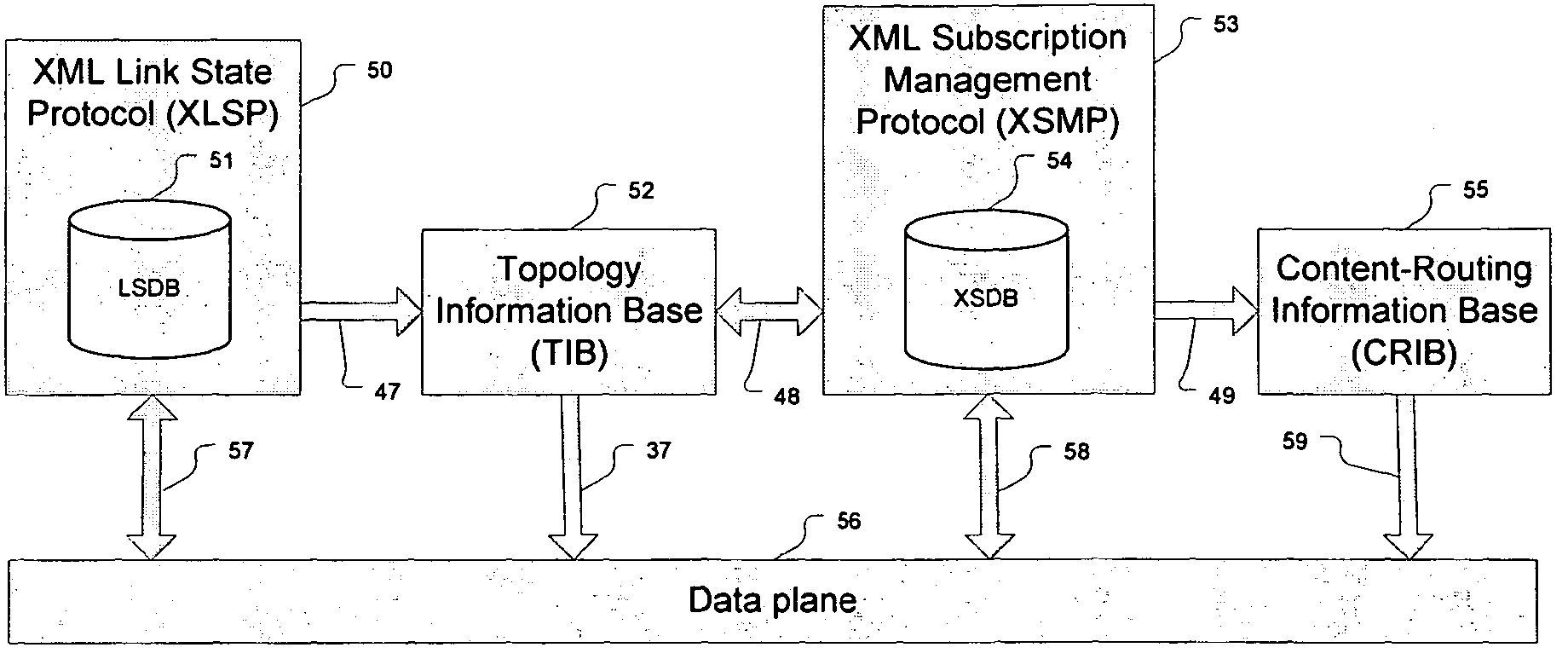Implicit routing in content based networks
a content network and implicit routing technology, applied in the field of content network, can solve the problems of unattainable internet scale network scalability, the memory requirement for storing all subscriptions across all routers in the network quickly becomes unattainable for an internet scale network, and the scheme of implicit or content routing does not address the requirements of scalability and robustness, so as to enhance the robustness of subscription management, enhance the scalability of the xml routed network, and reduce protocol bandwidth and memory
- Summary
- Abstract
- Description
- Claims
- Application Information
AI Technical Summary
Benefits of technology
Problems solved by technology
Method used
Image
Examples
Embodiment Construction
[0038]FIG. 1 shows a physical view of an exemplary content-routed network 1. The network consists of five IP routers 2, 3, 4, 5, and 6 inter-connected by physical links such as 32. Physical links can use a variety of technologies such as SONET, Ethernet, DS3, etc. as is known in the art. Attached to the IP routers are a plurality of content routers 7, 8, 9 and 10; a plurality of publishers 11, 12 and 13; and a plurality of subscribers 14, 15, 16, 17, 18, 19, and 20. Content routers, publishers and subscribers connect to the IP routers over physical links. For example, physical link 30 connects publisher 11 to IP router 2. Content routers, publishers and subscribers can also be dual-homed into the IP routed network. For example, publisher 12 connects over physical link 35 to IP router 2 and connects over physical link 36 to IP router 5; content router 7 connects over physical link 33 to IP router 2 and connects over physical link 34 to IP router 3. A content router, subscriber or pub...
PUM
 Login to View More
Login to View More Abstract
Description
Claims
Application Information
 Login to View More
Login to View More - R&D
- Intellectual Property
- Life Sciences
- Materials
- Tech Scout
- Unparalleled Data Quality
- Higher Quality Content
- 60% Fewer Hallucinations
Browse by: Latest US Patents, China's latest patents, Technical Efficacy Thesaurus, Application Domain, Technology Topic, Popular Technical Reports.
© 2025 PatSnap. All rights reserved.Legal|Privacy policy|Modern Slavery Act Transparency Statement|Sitemap|About US| Contact US: help@patsnap.com



